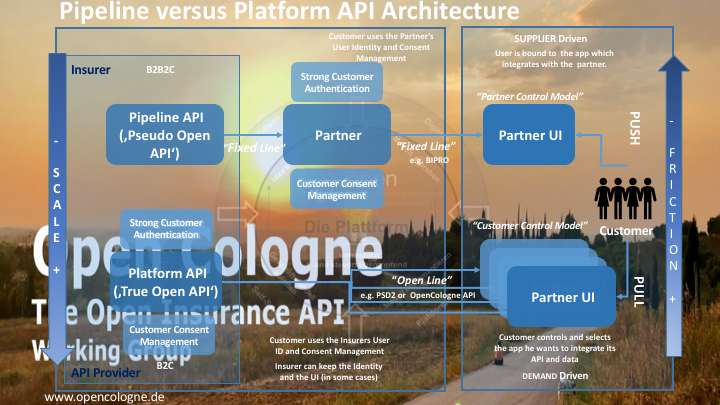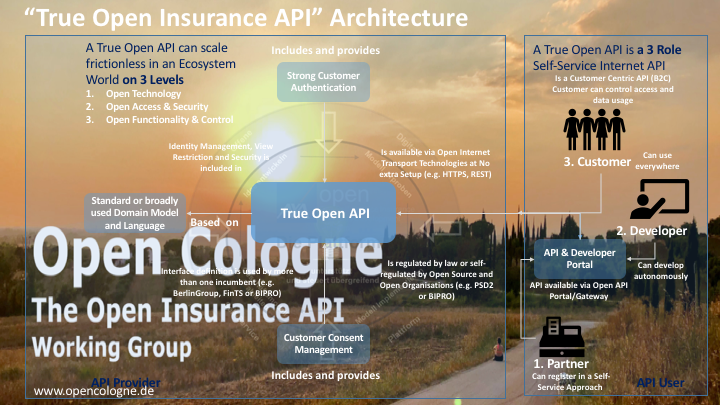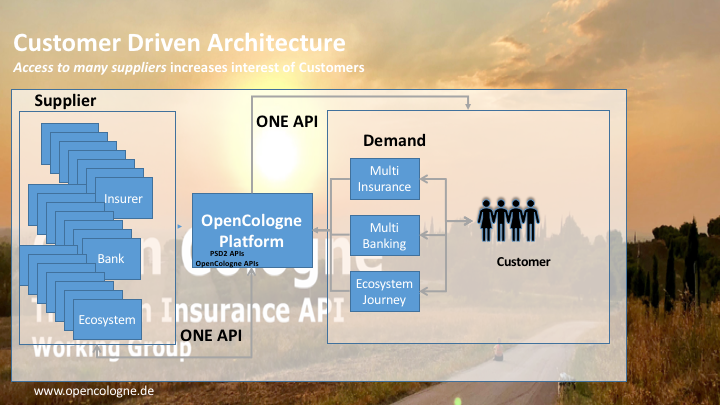What is the difference to other API initiatives (e.g. BIPRO in Germany)
While
forming the
OpenCologne initiative I am often asked:
- Why do we need another, a new API approach?
- What is the difference to other activities like BIPRO et al?
- Why now?
- And why we as Insurer?
Many good questions. And for all of them I hope I can provide an answer and rationale. While I tried to explain in my
last blog post, what a ‘True Open API’ is I today would like to illustrate by the graphic below, why we need a ‘True Open API’ for Platform Economic scaling also for Insurance.
And why current approaches don’t scale as best as possible and aren’t the most suitable match for platforms from an Insurer’s perspective.

What are the key capabilities of an OpenCologne API or Platform API?
- Open Cologne wants to provide a ”True Open API” (see for Architectures and capabilities)
- Open Cologne wants to provide a “Platform API” in contrast to a “Pipeline API” (see above for architecture and differences)
- Open Cologne is designed for PULL-, Demand- and User- Driven Models
- Open Cologne wants to provide an API controlled and ‘owned’ by the Customer and User (“Consent Driven API”)
- Open Cologne wants to keep the Incumbent and API provider visible by keeping the Incumbent, the Insurer “visible”
- Open Cologne APIs wants to be as frictionless and as self-service as possible and thus as scalable as possible
- Open Cologne wants to keep the Platform’s Core Value and Filters transparent to everybody
- Open Cologne want to use modern developer oriented technologies and methods (Open Source)
Many of the given capabilities aren’t fulfilled by others today and thus the reason for trying something new. And I’m not alone with this interest – not any longer.
Your opinion? What are your thoughts, your approaches?






